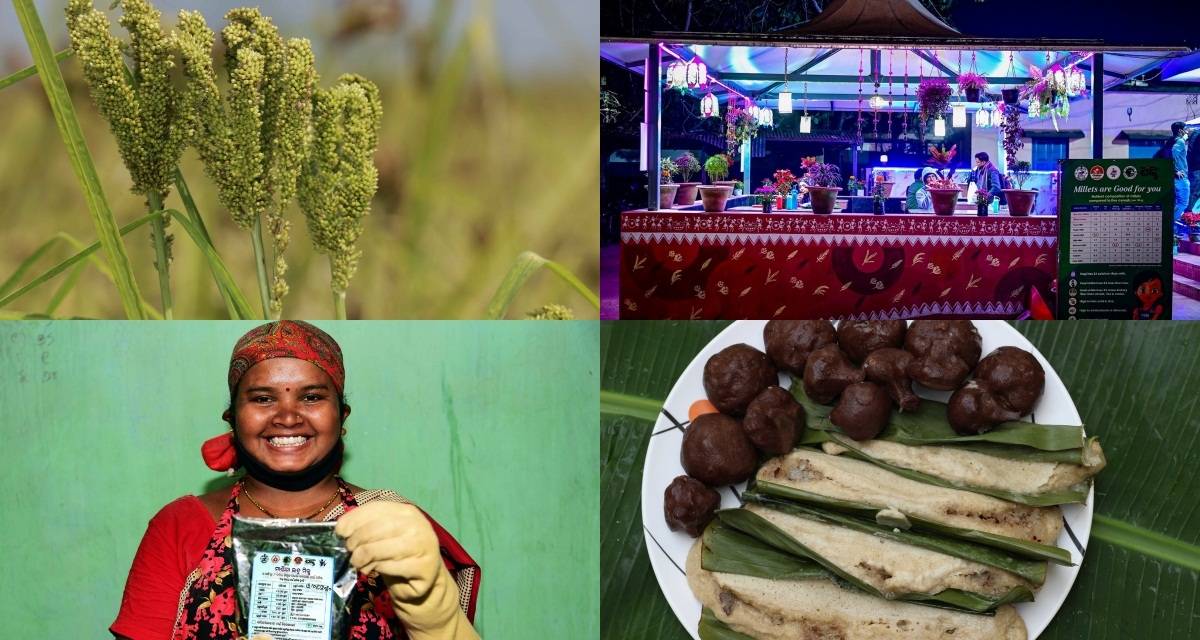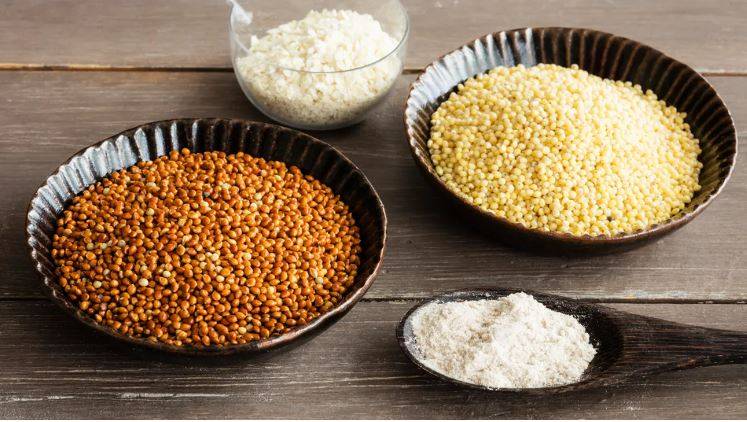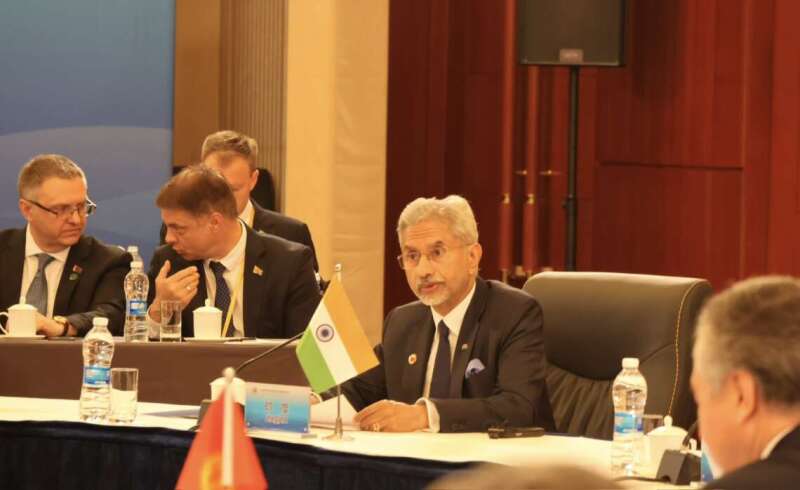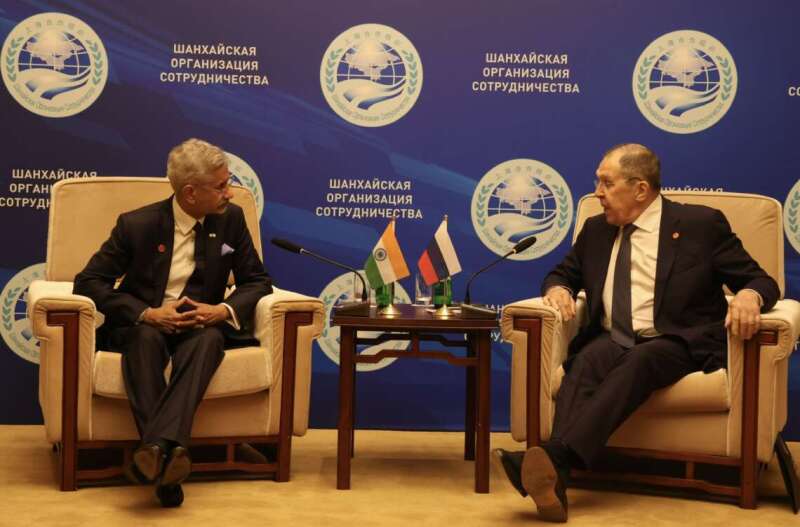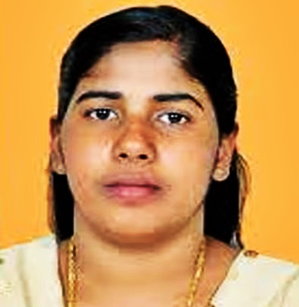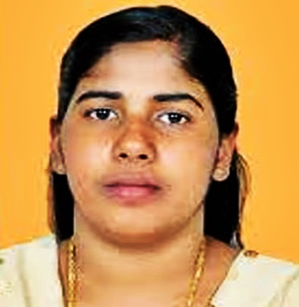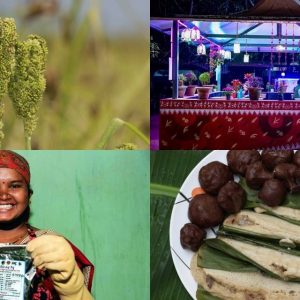Millet tiffin centres were launched in rural areas to create a demand for millet recipes and ensure access to diet diversity that is locally acceptable and highly nutritious…reports Abhijit Mohanty
The Odisha Millets Mission (OMM), a flagship initiative of the state government of Odisha, has supported women self-help groups (WSHGs) to set up 76 ‘millet tiffin centres’ at various community locations in 13 tribal-dominated districts.
The initiative has fortified the strength and conscientiousness of women collectives by setting up primary processing and post-harvesting units for millets in rural areas.
These millet-based enterprises can become a comprehensive solution in addressing malnutrition, unemployment and in motivating farmers to increase their millet cultivation area, which was once reduced due to aggressive promotion of cash crops, claim civil society organisations facilitating the implementation of OMM at the grassroots.
To revive millets as “Nutri-Cereals” in the state, OMM has prioritised creating awareness about production, productivity, consumption and marketing of millet produce and including millets in the state nutrition programme.
Awareness-building activities were organised, such as food festivals, cooking competitions, and celebrating local millet food cultures. Participatory training programmes were also conducted for WSHGs on millet recipes and millet enterprises.
Millet Tiffin Centres
Millet tiffin centres were launched in rural areas to create a demand for millet recipes and ensure access to diet diversity that is locally acceptable and highly nutritious. The WSHGs entirely manage these centres. They prepare a range of millet-based hot cooked items and ready to cook products.
“We prepare pakoda, samosa, jalebi, idli, vada, kheer and kakare from ragi and little millets,” Dasmati Sunani, President, Dakua WSHG in Sundargarh’s Rajgangpur block, said.
“Initially, we had no idea how people would react to our tiffin centre. However, today, we are happy. The demand for our food (millet recipes) is growing. Last month we earned around Rs 25000 as net profit,” she added.
Phulbasa Barla, Dakua WSHG member, recalled that initially, their tiffin centres faced some resistance from locals. “For years, it has been unheard of for women from our village to be involved in businesses. However, gradually, things are changing. Today, we are more organised as a group, and people respect us and love our food,” beamed Barla.
In Sundargarh, six millet tiffin centres were established between December 2021 and January 2022. An additional 21 such centres have been approved, and the memorandum of understanding was signed among the WSHG, Project Director, Agricultural Technology Management Agency and District Social Welfare Officer. To set up these tiffin centres, the OMM has sponsored Rs.30,000 for each WSHG.
Millet Shakti Cafe
Efforts have also been made to promote millet consumption in urban areas. For instance, in the collectorate campus of Keonjhar district, a Millet Shakti Cafe was established in October 2021. Ma Mission Shakti Women Federation manages the cafe, which offers different food items made from millets such as biscuits, mixture, khurma, rose cake, ladoo and eight grain varieties, including ragi flour, sorghum flour, little and barnyard millets. The cafe also provides tea, coffee and snacks to attract customers.
“We earn around Rs 50,000 as profit per month,” said Suprabha Mahanto, a federation member. As the demand for millet food recipes has been growing in the district, around 200-300 customers regularly visit this cafe per day. To expand our customer base, we are also providing home delivery services,” added Mahanto.
In Keonjhar, about 30 years ago, millet cultivation and consumption used to be widespread, recalled a retired agriculture officer in the district. “Earlier, millets were known as poor man’s food,” said Nalini Murmu, Secretary, Maa Padmaja Farmers Producer Company Limited. She added that people preferred commercial crops like paddy and replaced their traditional mixed method of cultivation with the mono-cropping system.
“OMM has revived people’s traditional millet-based diet, which is climate-resilient and boosts immunity,” highlighted Shishir Kumar Sarangi, former project coordinator, Mission Shakti, Keonjhar. He played an instrumental role in setting up the Millet Shakti Cafe. “This is a first of its kind initiative in the state. We are hopeful that more such cafes will be established in future,” he said.
In the state capital Bhubaneswar, a similar initiative has been taken up by Shaktimayee Ward Women Federation members. They have established a ‘Millet Outlet’ in Kurshi Bhawan a range of packaged millet food items is available such as ragi and sorghum flour, ragi cookies, ragi ladoos, ragi mixture, khurma and mudki. The federation earns around Rs.3000-4000 per day from selling various millet products.
Expansion of OMM
Initially, the OMM was launched in 30 blocks in seven districts and subsequently scaled up to 84 blocks in 15 districts, covering more than 1.2 lakh farmers with 52 thousand hectares under sustainable agronomic practices. Recently, the state government has allocated Rs 2800 crore to expand the OMM to 142 blocks in 2022.
Considering its visible impact, the OMM model has received numerous recognitions from other state governments and credible institutions. Niti Aayog has pledged to facilitate the inclusion of millets in the Integrated Child Development Services, Mid-day Meal and Public Distribution Services in different states as part of Poshaan Abhiyan as per the learning of OMM.
“Odisha Millet Mission is a replicable initiative,” said Abhilaksh Likhi, Additional Secretary, Ministry of Agriculture and Farmers Welfare, Government of India. In order to popularise millets across the state and national level, there is a need to engage with multiple stakeholders, including doctors, chefs and nutritionists. Also, he emphasised that it was essential to strengthen millet farming policies and institutional interventions that are inclusive and market-oriented.
The United Nations General Assembly has declared 2023 as the ‘International Year of Millets’. In India, the recent announcement during the 2022-23 Union Budget of supporting post-harvest value addition, enhancing consumption and branding millets further heightens the crucial role OMM could play in reinforcing the supply chain and promoting millets from farm to plate.
ALSO READ-Jamtara’s journey from cybercrime to community libraries


